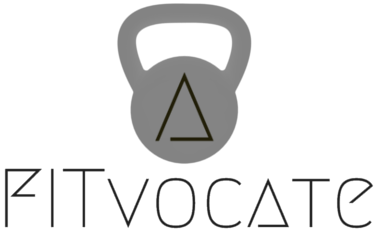
Here at Fitvocate we’ve been protein powder consumers for over 10 years now, and we’ve tried many brands. Like many others, we started off getting products with very high amounts of protein per serving; however much to our disappointment, while the protein content was high and strength and power may have been imminent, the taste was horrible. So, scarred from this experience we became more interested in the taste of the protein. So we wandered the earth (well actually store aisles, but you get the idea) trying brand after brand with little success. Over the years our mentality has changed, and flavor isn’t the biggest concern today, it’s almost as if we’ve converged back to our initial intent. However, now there’s one tiny itty bitty little difference…experience.
3 Major Components
With a little research matched with trial and error we’ve learned what a good protein powder should be comprised of. Here are some key factors you should look for when browsing shelves upon shelves upon shelves of protein powders all promising the same results.
First of all, per serving, a good protein powder should have at least 20 grams of protein. At the same time, it shouldn’t have more than 30 grams per serving; this is because your body can only metabolize 20 grams per hour, and while your body will utilize all of the protein consumed you may experience the bloated or “heavy” feeling associated with protein powder consumption, and that’s why we recommend between 20 to 30 grams. It gives your body enough to initiate the muscle development process and assures you’ll have the proper Amino Acids to continue the process most efficiently.
Secondly, it also should have no more than 15 grams of carbohydrates per serving. You may be thinking that a proper carbohydrate diet is as important as protein for successful muscle development. This is true; just after strenuous activity, such as working out, your body responds to this stress by releasing a hormone called cortisol and as stated earlier insulin counteracts the effects of cortisol; and carbs spike insulin. So the importance of carbohydrates is not being debated, however, during that 30 minute window everyone talks about when your body is initiating the response to the damage (micro tears in muscle tissue, don’t worry that’s the point of working out!) you’ve just ensued; protein is the most important nutrient you can give your body, and the amount of carbs pales in comparison. So we say no more than 15 grams, allowing your body to focus primarily on muscle development and give just enough carbs to quiet that cortisol.
Thirdly, and this may not be something a beginner would look for, a good protein powder should have all of the necessary Amino Acids for proper muscle development. This includes at least: Arginine, Leucine, and Glutamine. That’s right, if your protein powder is a proper complex there should be a broad profile of amino acids in it, making the purchase of any additional amino acids superfluous. A side note, per serving a protein powder should have no more than 250 calories per serving. That’s if calorie intake is a concern, such as for someone seeking lean body mass. As stated earlier, these protein powders are intended to be quick release proteins to initiate muscle development. Meal replacement protein powders would be the only purpose to having such a high amount of calories. This brings upon the next point…
What Protein Type Should I Purchase?
There are many types of protein, but we’ll discuss the big four including: Whey, Casein, Soy, Egg, and any blend or derivative (Isolates, etc.) of them. If you are new to the game the rules are pretty simple. Whey is a fast releasing protein, ideal for post workout. Casein is slow releasing, because of this trait it is aimed for pre bedtime or a meal replacement because it releases a steadier concentration of protein over a longer duration of time. Both of these are milk derivatives, you get both by drinking milk. Soy is essentially for those who are lactose intolerant, and or someone who has a vegetarian or vegan diet. Egg, another alternative to lactose intolerant individuals, is and has always been a good source of protein, think Rocky before training, but this is just a more civilized form (Sans Salmonella). As for blends, they tend to be treated as best of both worlds. You’ll most commonly find whey and casein combined for a more steady release of protein for a longer duration. Or, you’ll find a protein containing a combination of all four. This is just a manufacturer’s way of saying we don’t know which is best so we’ll throw all of it at you to cover all grounds. Isolates are derivatives of the abovementioned proteins; they’re the purest form of the protein and the manufacturer’s claims they’re absorbed in the body faster.
With this information you should be knowledgeable enough now to shop the plethora of protein powder brands and all of their shallow promises. Laughing with smugness upon reading the ingredients, nutritional information, and guarantees all of these protein powder brands offer. We encourage you to scour the globe (or store aisles) with your new found ability and find your own perfect protein powder. Happy findings!
If your protein powder is a proper complex there should be a broad profile of amino acids in it, making the purchase of any additional amino acids superfluous.
- Muscle Size
- Recovery
- Supplements
- Weight Training

